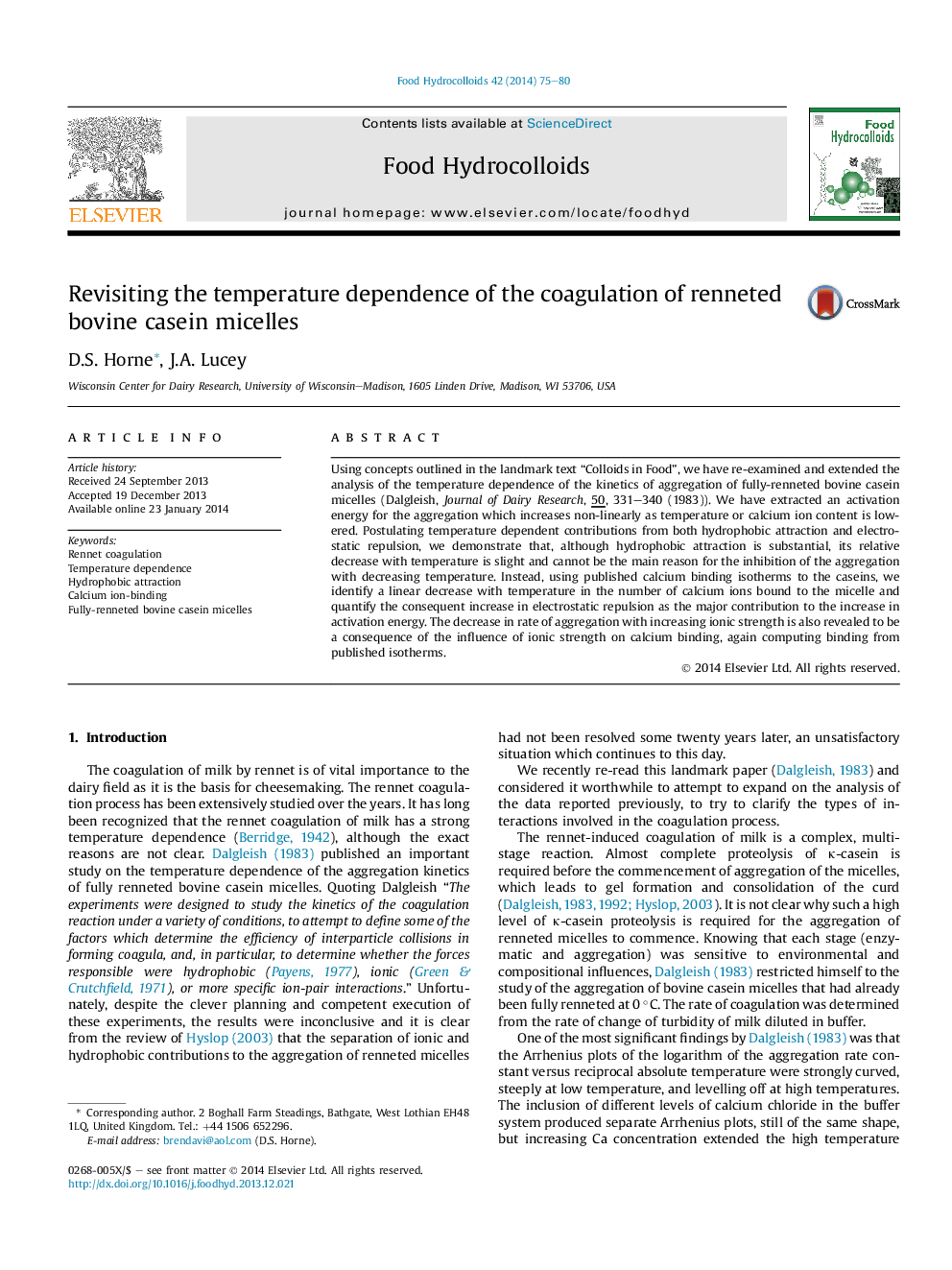| Article ID | Journal | Published Year | Pages | File Type |
|---|---|---|---|---|
| 604843 | Food Hydrocolloids | 2014 | 6 Pages |
•We re-examine the rennet coagulation process and interactions involved.•Activation energy plots were created for changes in temperature and calcium ions.•At low temperatures and high ionic strength, the coagulation process was inhibited.•This inhibition was mainly due to decreased calcium binding by caseins.•Decreased hydrophobic attractions were not a major factor in this inhibition.
Using concepts outlined in the landmark text “Colloids in Food”, we have re-examined and extended the analysis of the temperature dependence of the kinetics of aggregation of fully-renneted bovine casein micelles (Dalgleish, Journal of Dairy Research, 50, 331–340 (1983)). We have extracted an activation energy for the aggregation which increases non-linearly as temperature or calcium ion content is lowered. Postulating temperature dependent contributions from both hydrophobic attraction and electrostatic repulsion, we demonstrate that, although hydrophobic attraction is substantial, its relative decrease with temperature is slight and cannot be the main reason for the inhibition of the aggregation with decreasing temperature. Instead, using published calcium binding isotherms to the caseins, we identify a linear decrease with temperature in the number of calcium ions bound to the micelle and quantify the consequent increase in electrostatic repulsion as the major contribution to the increase in activation energy. The decrease in rate of aggregation with increasing ionic strength is also revealed to be a consequence of the influence of ionic strength on calcium binding, again computing binding from published isotherms.
Graphical abstractFigure optionsDownload full-size imageDownload as PowerPoint slide
